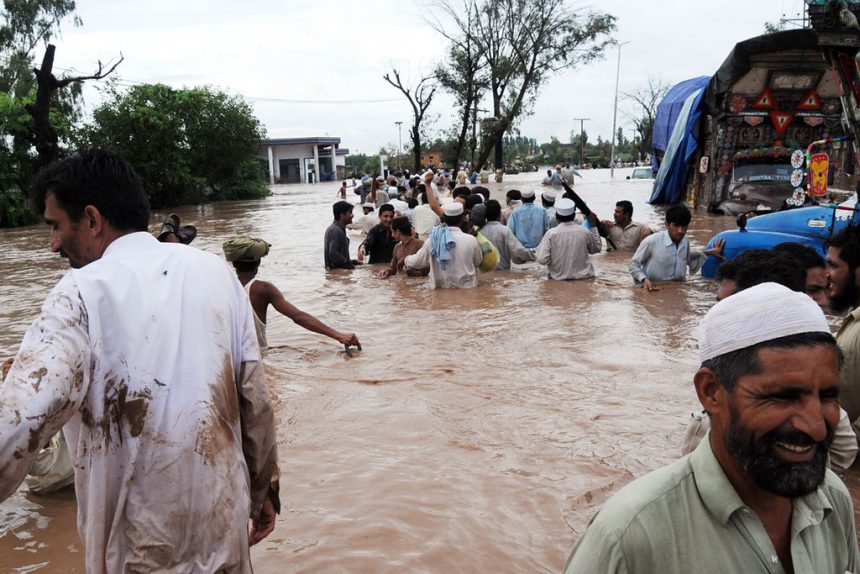What’s Going On
Pakistan is currently facing one of its worst flood emergencies in recent history, with monsoon rains and swollen rivers forcing more than two million people to evacuate from their homes. The hardest hit area is Punjab province, where authorities say over two million residents have been displaced, while Sindh province has seen at least 150,000 additional people forced to flee.
The flooding began in late August and has continued into September, driven by unusually heavy monsoon downpours and water releases from dams upstream. Rivers including the Ravi, Sutlej, and Chenab have burst their banks in many districts.
Scale of the Damage
The human toll has been severe. Since late June, over 900 people have died across Pakistan as a result of the floods. Punjab alone has recorded nearly 100 fatal incidents.
Thousands of villages have been submerged. In Punjab, over 4,000 villages have been drenched, and millions of acres of farmland—including critical crops—have been lost or damaged. Livestock losses are also severe. Many people have been displaced multiple times as floodwaters shift.
Relief camps are overcrowded, with families sleeping in tents or on roadsides. Access to clean water, medical supplies, shelter and food is limited in many affected areas. Rescue operations are ongoing but challenged by strong currents, damaged infrastructure, and people reluctant to leave their homes or livestock behind.
Government & Humanitarian Response
The National Disaster Management Authority (NDMA), together with provincial authorities (especially in Punjab), the military, and local relief organizations, are leading evacuation and rescue efforts. Boats, helicopters, and drones are being deployed to reach stranded people.
Relief supplies—tents, food, blankets, water purification tools—are being sent to affected areas. Officials say they are on high alert, particularly as some rivers downstream are expected to rise further. Efforts are also underway to reinforce embankments.
Challenges & Risks Ahead
- Worsening conditions: Heavy rains are forecast to continue, and water releases from upstream dams may further raise river levels.
- Infrastructure damage: Roads and bridges are washed out or submerged, complicating rescue efforts. Many affected areas are remote.
- Health risks: Standing water and overcrowded shelters increase risk of waterborne diseases. Clean water supply and sanitation are major concerns.
- Livelihood losses: Floods destroying farmland and livestock threaten food security and income, especially for poorer households that depend on agriculture.
What Needs to Be Done
To mitigate the crisis, experts say there must be:
- Faster delivery of humanitarian aid, especially to remote or cut-off areas.
- Better early warning systems and continuous monitoring of dam water levels.
- Temporary shelters with proper sanitation, clean water, and medical care.
- Support to help farmers recover crop losses and rebuild infrastructure.
- More coordination with neighboring countries regarding dam releases and water flows to reduce cross-border risks.










